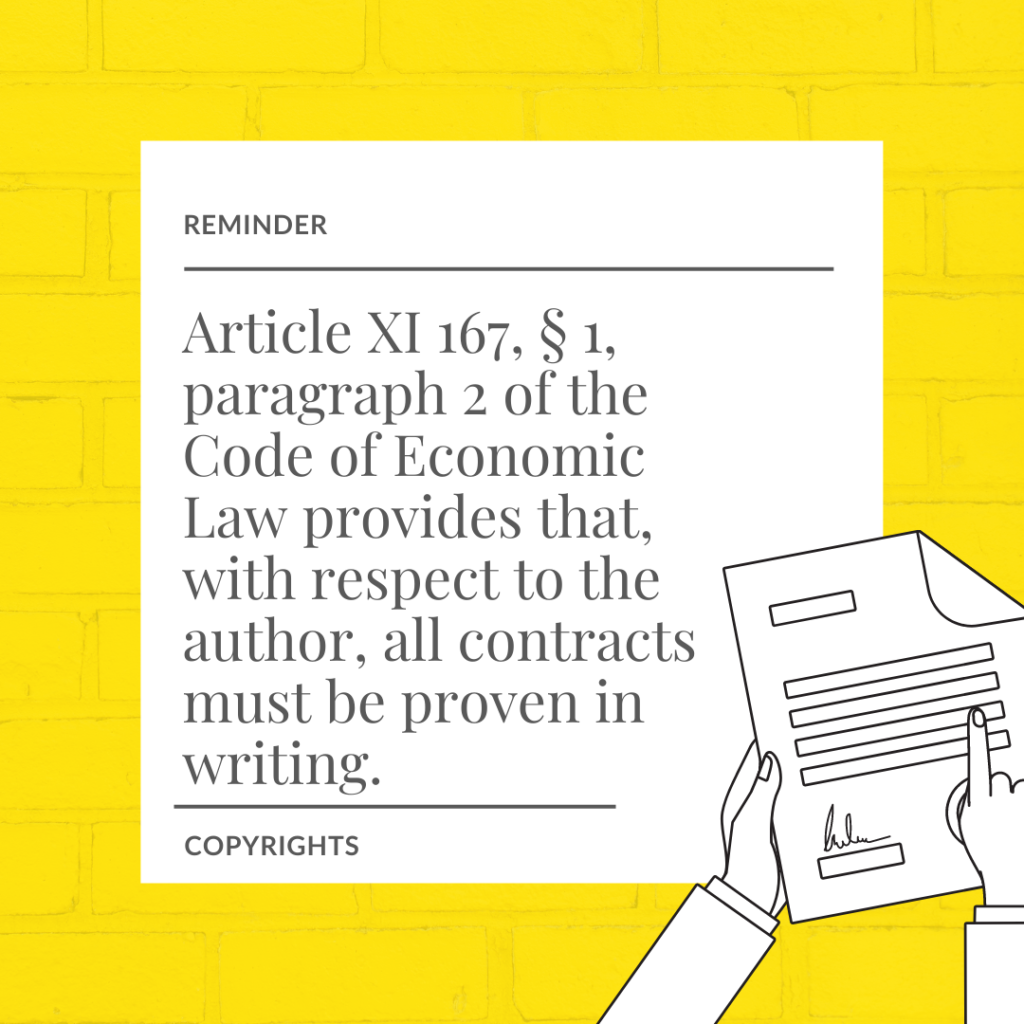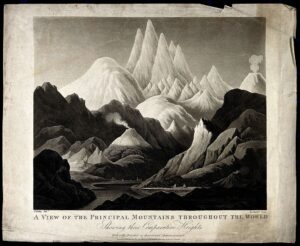Notion
Copyright consists of the prerogatives that the law recognizes for creators of literary and artistic works. This copyright allows authors to control the exploitation of their creation and to protect its integrity.
The objective of copyright is to encourage creation, by guaranteeing to those who devote themselves to it the possibility of making this economic activity viable, even profitable, and to allow the diffusion of creation to the public by associating the creators.
Each registered data related to this NFT (smart contracts) cannot be modified or falsified.
All exchanges made between users can be publicly viewed.
All of these features make it possible to exchange valuable files online without intermediaries.
Art. XI.165 of the Code of Economic Law: 1 § 1. The author of a literary or artistic work shall have the sole right to reproduce it or to authorize its reproduction, in any manner and in any form, whether direct or indirect, temporary or permanent, in whole or in part.
This right includes the exclusive right to authorize adaptation or translation. This right also includes the exclusive right to authorize the rental or lending of the material.
The author of a literary or artistic work has the sole right to communicate it to the public by any means, including making it available to the public in such a way that everyone may access it from a place and at a time individually chosen by him.
The author of a literary or artistic work has the sole right to authorize the distribution to the public, by sale or otherwise, of the original of his work or copies thereof.
The first sale or other transfer of ownership of the original or a copy of a literary or artistic work in the European Union by the author or with his consent exhausts the distribution right of that original or copy in the European Union.
It seems to us that, to date, the exchange platforms and generally speaking the practitioners of the NFTs ecosystem do not sufficiently distinguish between RIGHTS ON A WORK and OWNERSHIP of a digital work.
The rights can survive a work which would be for example destroyed or simply given or sold or would be the subject of a dismemberment of property (the salesman preserves the copyright on the work which it transfers).
This articulation of authors’ rights/real rights (full ownership/NP/UF, undivided ownership,…) is for us a creator of multiple values based precisely on the possibilities that blockchain technology makes possible by its identification as varied as it is rich and unfalsifiable of multiple rights on a work of art. In fine, a smart contract includes exactly EVERYTHING that the parties agree upon, opening the art world to an infinite follow-up, not limited in time or in terms of number of transactions, rights and revenues to be shared.
Smart contracts are contracts that automatically execute when certain conditions are met.
For each mode of exploitation, the remuneration of the author, the extent and the duration of the transfer must be expressly determined.
Hence the importance of the drafting of the agreement of transfer or license of rights. In case of doubt, the interpretation will be in favor of the author.

The right of reproduction
The reproduction of a work can only take place with its express agreement, except for exceptions.
It is on the basis of this right that the author can validly oppose the reproduction of his creation in all its possible forms: photography of the work, postcards or posters representing the work, insertion of the work on an Internet site or in a book, etc
The buyer of an NFT might forget that he is not authorized by the seller (often the creator and therefore the owner of the copyright) to reproduce the work on other media, unless there is a written agreement to the contrary or general conditions of the exchange platform.
For the creator, the NFTs technology and its smart contracts allows on the contrary to easily decide the number of “copies” of the work, either in digital only (support of the work) or in terms of copyright and reproduction right.
Before the invention of photography, the easiest way to reproduce images was by engraving.
Two techniques – aquatint and lithography – became particularly popular among Romantic artists.
Aquatint offered printmakers the opportunity to create richly hued passages, ranging from pale grays to deep blacks.
 Lithography is an entirely different technique, which does not require the metal plate used for etching and aquatint. With lithography, the artist uses a pencil or other grease-based medium to draw a design on a specially prepared porous limestone block. Water applied to the surface is absorbed by the porous stone but repelled by the greasy ink. An oil-based ink is then applied to the surface: because of the natural repulsion between oil and water, the ink remains only on the areas marked by the artist. This surface can then be covered with a sheet of paper and pressed with much less pressure than an etching or aquatint. Because lithography does not require the incision of a metal plate or the use of harmful acids, it allows artists to work in much the same way as they would when drawing, which explains the success of lithography.
Lithography is an entirely different technique, which does not require the metal plate used for etching and aquatint. With lithography, the artist uses a pencil or other grease-based medium to draw a design on a specially prepared porous limestone block. Water applied to the surface is absorbed by the porous stone but repelled by the greasy ink. An oil-based ink is then applied to the surface: because of the natural repulsion between oil and water, the ink remains only on the areas marked by the artist. This surface can then be covered with a sheet of paper and pressed with much less pressure than an etching or aquatint. Because lithography does not require the incision of a metal plate or the use of harmful acids, it allows artists to work in much the same way as they would when drawing, which explains the success of lithography.
The NFTs allow the artist to create digital “lithographs” with a number that is easily identifiable and traceable on the blockchain.
The right to adaptation and translation
The author benefits from a right allowing him to grant or not to a third party the possibility to adapt his work. The same applies to the right of translation.
Once the work has been adapted or translated, the adapter/translator also benefits from copyright on his adaptation if his work is protected (original and materialized).
Rental and lending rights for the work
The author is the only person to authorize – or not – the rental or lending of his creation.
When he rents the work, he will make it available for use by the lessee.
The author shall be remunerated for the rental by the payment of a sum of money.
As for the loan, it aims at making the work available free of charge.
The right of communication of the work to the public
This right covers all means of communication with the public: radio, television, satellite, cable or digital, etc.
In this framework, the work is approached in an immaterial way, diffused by means of a tool of communication with the public (contrary to the reproduction right aiming at the work in its materiality and reproduced as such). This point applies particularly to the audiovisual works (films, musics, songs,…), but also to the works of art, being able to be communicated to the public by various technical means (Internet, cinema, television in particular).
The author can of course object to the communication of his work to the public by one or other channel of diffusion and authorize the diffusion by other channels.
To learn more read: Alexandre PINTIAU – Reminder of the principles of copyright – Heritage and works of art – Selected issues – 1st edition 2016 – Larcier – P. 187 and following.





